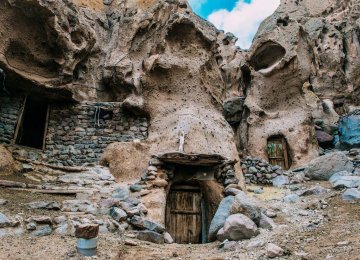The 3rd International Troglodytic Architecture Conference has called for submission of articles.
Organized by the Research Institute of Cultural Heritage and Tourism, affiliated to Iran’s Cultural Heritage, Handicrafts and Tourism Organization, the conference will accept synopsis until June 21, according to the website of the conference, Ticota.richt.ir.
Topics of the conference are theoretical concepts and fundamentals in troglodytic architecture; cultural context of troglodytic architecture; natural context and troglodytic architecture; conservation in troglodytic architecture; and technology in troglodytic architecture.
The two preceding confabs were held in 2012 and 2015 in Kerman and Tehran respectively. The upcoming meeting will be held in Hamedan October 9-11.
Abstracts are to be submitted to the secretariat of the confab located at the premises of RICHT on 30-Tir Street, across the National Museum of Iran. The abstracts will be evaluated on July 6 and authors of selected works will be asked to send complete articles by August 23. Results of final evaluation will be announced on September 11. Details and more info can be sought on the conference website.
Today, troglodytic architecture in Iran and other parts of the world are being reconsidered in a new light. Maybe it needs to be understood why this type of architecture was consigned to oblivion, says an introduction to the conference.
Neglected for Humble Appearance
The word troglodyte is Greek for cave dweller. There are few historical documents about troglodytic structures; however, it would be implausible to say that this type of architecture was not important for humans in the past. It is known that troglodytic structures were valuable enough to encourage their builders face many challenges such as finding a suitable location for building the structures, the difficult and slow process of carving hard and heavy mass, space limits, lack of proper lighting, etc.
Historians and travel-writers were instructed by the local rulers to pay close attention to the monumental buildings of the place they were writing about. But almost always they neglected the native architecture. In their writings, troglodytic structures were either completely ignored or mentioned haphazardly, perhaps because they usually failed to impress.
With their unassuming and semi-hidden appearances, troglodytic structures were not considered as the creative artistic masterpieces. They became forgotten while many other native assets were lost.
Troglodytic architecture can preserve water through reaching it inside the ground, preventing it from evaporating. It can protect residents from enemies, cold or heat and predators. It can embrace their dead inside the graves carved inside the ground. It can provide an environment for rituals and prayers and thereby serve as a sacred place.
The 3rd International Conference on Troglodytic Architecture is a rare global event inviting researchers to pay more attention to this creative art of the human being. The event also seeks to create awareness about the invaluable heritage.






Add new comment
Read our comment policy before posting your viewpoints